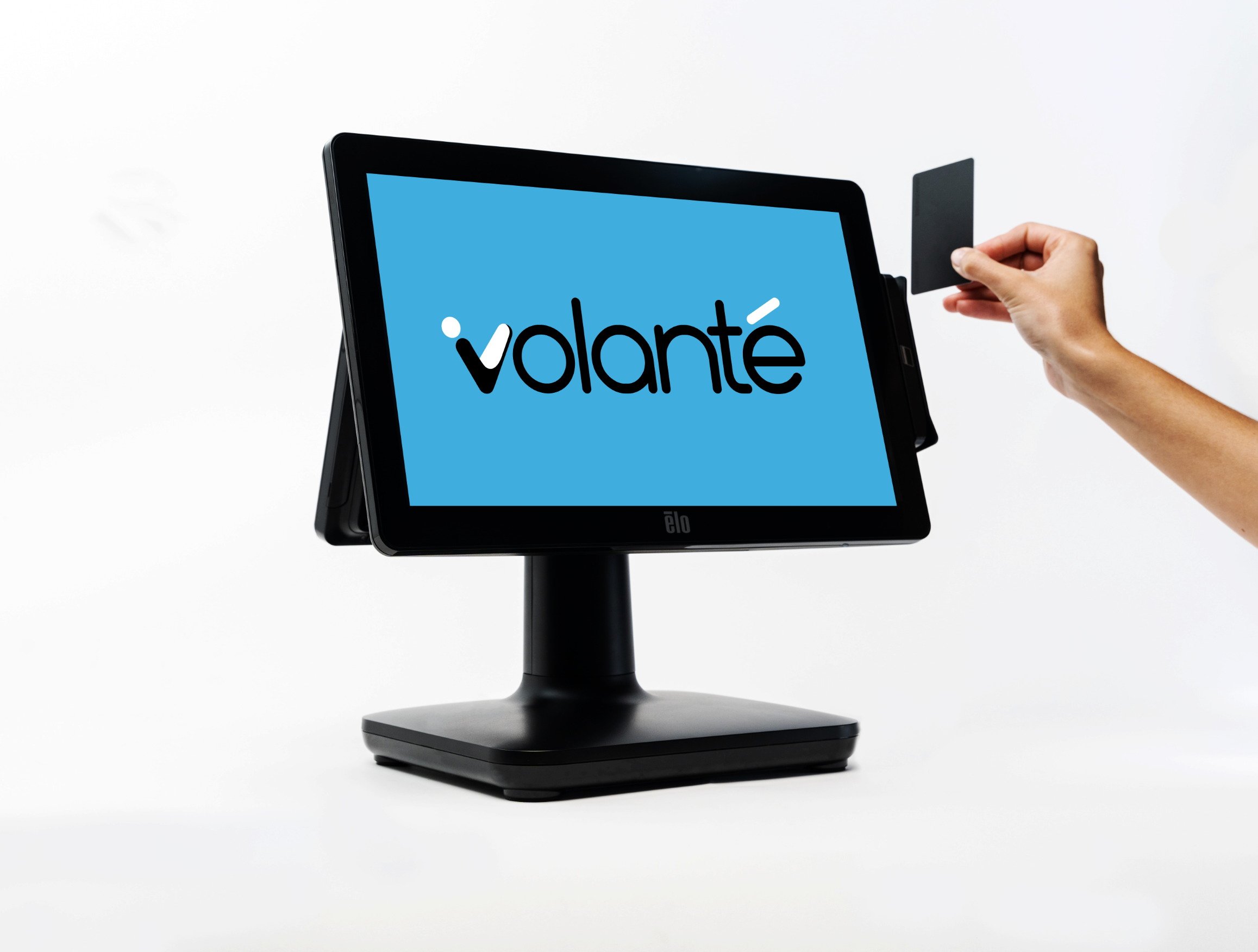Cafeterias are fast-paced, high-volume environments with multiple shifts, rotating staff, and tight operating budgets. Whether you run a school lunchroom, hospital dining hall, or corporate foodservice market, your Point-of-Sale (POS) system is a crucial tool—but also a potential vulnerability. As a POS provider for thousands of cafeterias across North America, Volanté has put together some best practices in POS theft prevention, contained in this blog post.
Internal misuse and theft remain a significant issue in foodservice. According to the National Restaurant Association, employee theft contributes to as much as 75% of inventory shrinkage. In cafeterias—where oversight is often decentralized and speed is key—weak POS protocols can quietly drain profits.
The good news: A few smart changes to your POS configuration and policies can significantly reduce risk.
1. Replace Shared Codes with Manager Swipe Cards or Biometric Login
Cafeteria staff often share PINs or logins for convenience—but this practice opens the door to misuse. It becomes impossible to tell who authorized a refund, voided a sale, or opened a drawer. This includes codes that are used for Training mode or other simulated transaction modes.
Best Practice: Use individual swipe cards or biometric logins (like fingerprint recognition) for cashier and supervisory-level POS access. Each user should be uniquely identifiable and the use of cards is more secure than using a PIN or access code that can be easily copied or shared.
Restaurant Technology News reports that biometrics reduce unauthorized POS access and are increasingly being adopted in high-volume institutional cafeterias.
2. Avoid Shared Cash Drawers to Improve Accountability
In many cafeterias, staff rotate through the same register, often across multiple shifts. This makes it difficult to track discrepancies or theft.
Best Practice: Assign individual drawers or digital cash tracking per cashier per shift. If physical drawer separation isn’t feasible, track transactions by unique user login to establish accountability.
Restaurant365 found that eliminating shared drawers reduced cash loss incidents by over 50% in institutional settings.
3. Rotate POS Passwords Every 90 Days
In institutional cafeterias, especially those with contracted labor or seasonal employees, passwords are rarely updated. Former staff may retain access to sensitive systems long after leaving. Be sure to deactivate staff when they leave the organization and make account disabling a part of the offboarding policy.
Best Practice: Enforce a 90-day password change policy. For supervisors, require strong passwords and multi-factor authentication where available.
The PCI Security Standards Council recommends quarterly password rotation as part of secure system design.
4. Assign Roles Based on Job Type—Not Convenience
A common issue in cafeterias is “permission creep,” where employees are given higher-level access “just in case” or for speed. This can lead to abuse of functions like reprinting tickets, applying discounts, or voiding items.
Best Practice: Use clearly defined user roles—like “Cashier,” “Line Server,” “Supervisor,” and “Back Office”—each with only the access they need. Don’t allow overrides without a traceable login.
Toast POS research shows that job-specific POS roles reduce accidental errors and intentional fraud.
5. Set Up Alerts for Cash Drawer Opens
Unexpected drawer opens—especially those not tied to a sale—are red flags. In cafeterias with limited real-time oversight, this is a key area of vulnerability.
Best Practice: Configure your POS system to log all drawer opens, including “no sale” events. Trigger email or SMS alerts for after-hours access or excessive drawer activity. Ensure that the drawer can only be opened during a cash sale or with the correct override permissions.
POS Nation notes that cash drawer alerts are one of the most effective theft deterrents in high-volume settings.
6. Train Staff on POS Responsibility
Security is a team effort. Many cafeteria employees don’t realize that the POS system logs every action—and that misuse, even accidental, can trigger an audit.
Best Practice: Include POS expectations in staff onboarding. Explain how the system tracks user activity, and clarify what permissions each role has. Reinforce that policies exist to protect everyone.
The National Restaurant Association emphasizes staff training as a primary defense against internal theft.
7. Integrate Video Surveillance with POS Transactions
Cafeterias often rely on cameras for general security, but tying those cameras directly to POS events—like refunds, voids, or drawer opens—creates a powerful layer of oversight and helps with POS theft prevention.
Best Practice: Use POS-integrated surveillance software to timestamp and link transactions with camera footage. This is especially helpful during high-volume periods when live oversight isn’t possible.
Vendors like Solink offer cafeteria-ready integrations that help reduce shrink and resolve disputes faster.
8. Limit Remote Access to the POS System
With cloud-based POS systems becoming the norm, cafeteria directors or district admins often access back-office tools remotely. But remote access, if not secured, creates serious risks.
Best Practice: Restrict remote access to authorized IP addresses, require multi-factor authentication, and review login logs regularly.
PCI DSS standards require securing remote access points as part of broader data protection protocols.
Final Thoughts: A Secure Cafeteria POS = Stronger Operational Control
Whether you’re managing a school, healthcare, or industrial cafeteria, POS security isn’t just about technology—it’s about trust, accountability, and revenue protection. Implementing clear roles, strong credentials, and transparent transaction logging will improve accountability, reduce theft, and free you to focus on delivering quality service.
Interested in seeing how Volanté’s retail dining technology could work in your building?
Reach out to Volanté at 1.877.490.6333 ext. 3.




